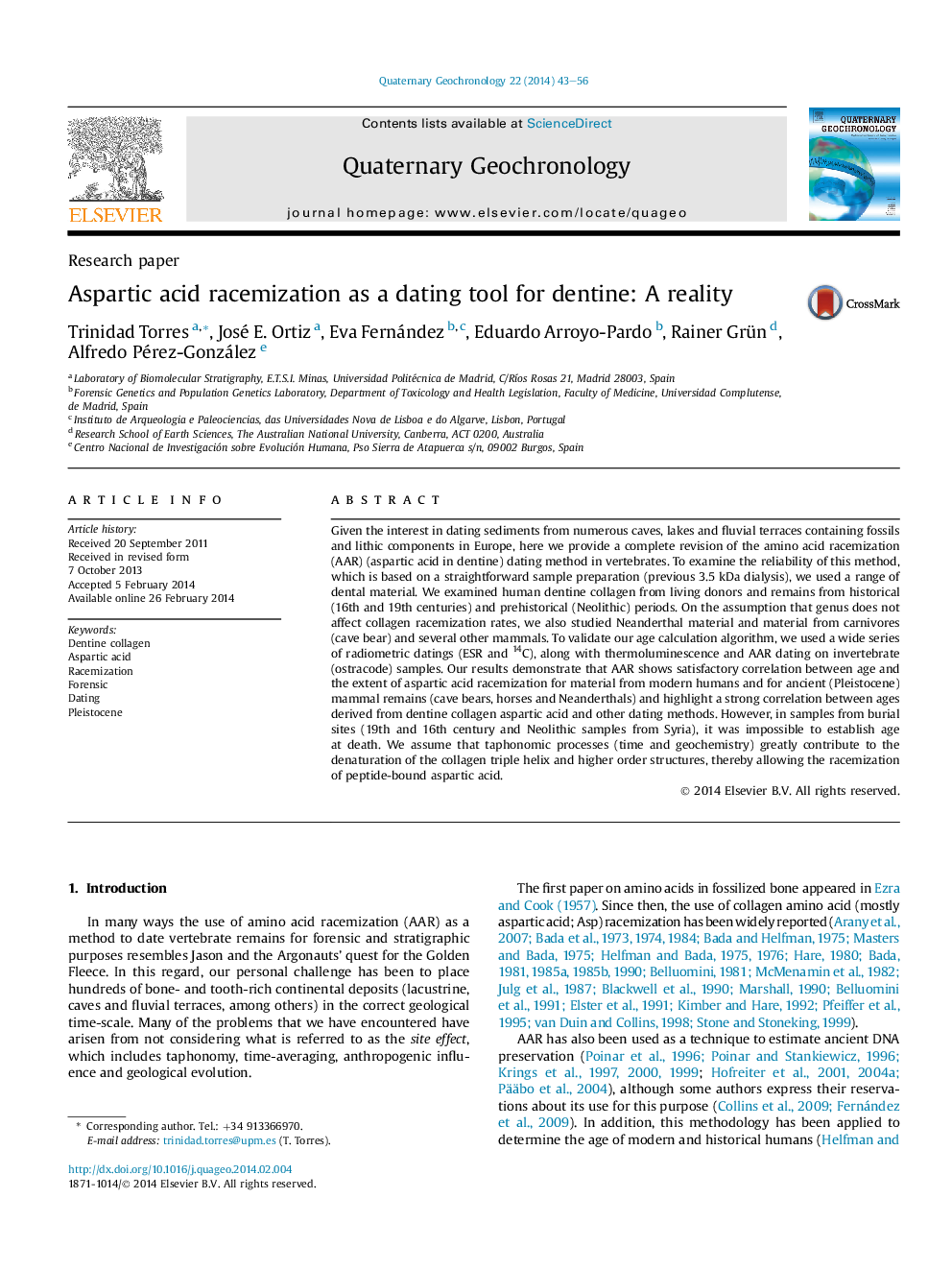| Article ID | Journal | Published Year | Pages | File Type |
|---|---|---|---|---|
| 4724959 | Quaternary Geochronology | 2014 | 14 Pages |
•AAR dating shows satisfactory performance on living humans and Pleistocene mammal remains.•Results in samples from recent corpses and Neolithic burials are discouraging.•In man-mediated sites the anthropic effect must be carefully controlled.•The time-averaged character of many vertebrate remains accumulations explains the scattering of D/L values.
Given the interest in dating sediments from numerous caves, lakes and fluvial terraces containing fossils and lithic components in Europe, here we provide a complete revision of the amino acid racemization (AAR) (aspartic acid in dentine) dating method in vertebrates. To examine the reliability of this method, which is based on a straightforward sample preparation (previous 3.5 kDa dialysis), we used a range of dental material. We examined human dentine collagen from living donors and remains from historical (16th and 19th centuries) and prehistorical (Neolithic) periods. On the assumption that genus does not affect collagen racemization rates, we also studied Neanderthal material and material from carnivores (cave bear) and several other mammals. To validate our age calculation algorithm, we used a wide series of radiometric datings (ESR and 14C), along with thermoluminescence and AAR dating on invertebrate (ostracode) samples. Our results demonstrate that AAR shows satisfactory correlation between age and the extent of aspartic acid racemization for material from modern humans and for ancient (Pleistocene) mammal remains (cave bears, horses and Neanderthals) and highlight a strong correlation between ages derived from dentine collagen aspartic acid and other dating methods. However, in samples from burial sites (19th and 16th century and Neolithic samples from Syria), it was impossible to establish age at death. We assume that taphonomic processes (time and geochemistry) greatly contribute to the denaturation of the collagen triple helix and higher order structures, thereby allowing the racemization of peptide-bound aspartic acid.
